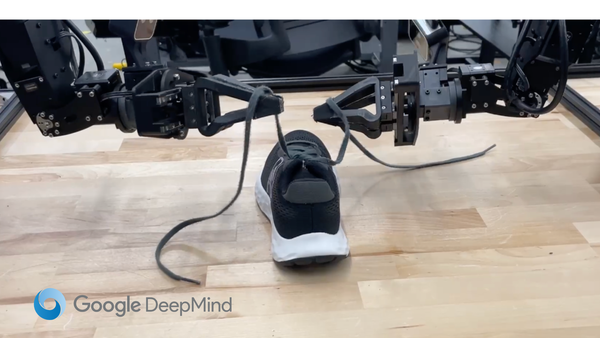BMW Successfully Tests Figure 02 and 3 More Stories
Figure 02, BMW, Multi-Robot Manipulation Planning, and a Chinese Stealth Army

Figure 02 continued to dominate this week's humanoid robot news. But there were a few other interesting developments, plus one HUGE warning from the U.S. congress.
Let's jump in..
BMW Successfully Tests Figure 02 Humanoid Robot at Spartanburg Plant
BMW is piloting the use of humanoid robots in its production process. During a trial at the Spartanburg plant, Figure 02, a robot from California-based Figure, demonstrated its capability by inserting sheet metal parts into chassis assembly fixtures.

This robot’s dexterity allows it to handle ergonomically challenging tasks for human workers, potentially reducing strain and improving safety. BMW Group is evaluating how such robots can be safely integrated into production lines.
The trial provided valuable insights into the requirements for integrating multipurpose robots into existing systems.
Moving forward, BMW and Figure will continue to collaborate on developing Figure 02 for broader applications in manufacturing. This trial shows BMW's commitment to exploring advanced technologies to enhance production efficiency and worker safety.
Will AI-Powered Humanoid Robots Work in Retail Stores?
There are many discussions and trials on integrating AI-powered humanoid robots into retail and manufacturing settings. While these robots hold potential for tasks ranging from assembly to customer service, their adoption is expected to be gradual.

Challenges such as technological advancement, workforce adaptation, and customer acceptance must be addressed.
Despite significant progress, industry experts like Andy Williams from Exotec believe practical deployment is at least five years away. This timeline allows for continued AI training and necessary workforce transitions.
In the retail sector, the success of humanoid robots will hinge more on their functionality than their resemblance to humans. Experts stress the importance of meticulous planning and human-centric design to ensure effective integration.
As these robots become more prevalent, they are anticipated to create new job roles. However, concerns remain about the potential reduction in direct human workplace interactions.
Source: PYMNTS
Experts and Congress Believe Chinese-Made Humanoid Robots Could Be ‘Stealth Army On Our Land’
Concerns are rising in Congress over the potential security risks posed by Chinese-made humanoid robots, with some lawmakers calling for an outright ban. These robots, developed by companies like Unitree Robotics, are highly advanced, capable of high-speed movement and human-like tasks.

Jacob Helberg, a member of the US-China Economic and Security Review Commission, warns that these robots could be used for espionage or sabotage, likening them to a "stealth army" on US soil.
While some experts dismiss these fears as exaggerated, lawmakers like Steve Scalise and Senator Katie Britt argue that the US is running out of time to address the threat. They draw parallels to past actions taken against Huawei and TikTok, emphasizing the need for preemptive legislation.
The Chinese government has ambitious plans to mass-produce humanoid robots by 2025, further intensifying these concerns. The debate highlights the broader tension between innovation and national security.
Source: NY Post
Enhancing Efficiency in Humanoid Robotics with Multi-Robot Manipulation Planning
A recent paper from Carnegie Mellon University students introduces a new approach to enhancing multi-robot manipulation planning, which could significantly benefit humanoid robotics.

The research, led by Yorai Shaoul and colleagues, focuses on improving the efficiency of coordination among multiple robotic arms. This advancement is especially relevant for humanoid robots, which often require the synchronized movement of multiple limbs to perform complex tasks.
The study presents a method that accelerates planning by reusing paths generated in earlier stages of Conflict-Based Search (CBS) algorithms. This approach reduces computational demands without compromising the quality of solutions.
Experiments with up to 10 robotic arms demonstrated that this method improves speed and scalability, particularly in cluttered environments.
For humanoid robots, this technique could enhance tasks like assembly or interaction with humans by enabling quicker and more reliable planning of complex movements.
However, adapting this method to the diverse configurations of humanoid robots and ensuring real-time responsiveness in dynamic environments remains a challenge.
Source: Carnegie Mellon University



